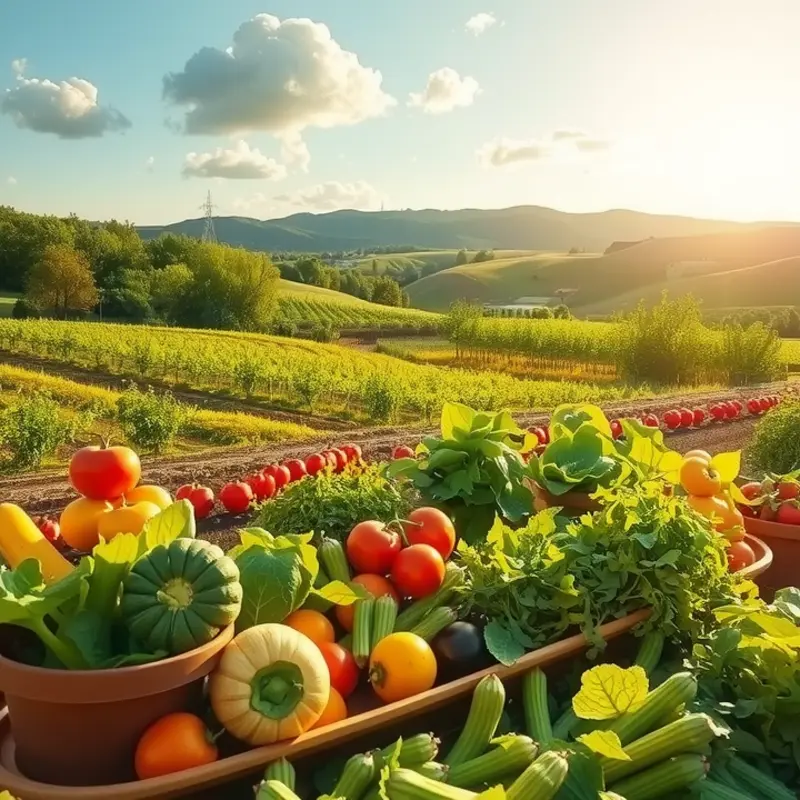Harvest feasts are a vibrant expression of cultural identities and culinary heritage, celebrated around the globe with abundant flavors and traditions. Each harvest season marks a time of gratitude and celebration, where communities come together to honor the fruits of their labor. From the hearty dishes of North America to the colorful spreads of Asia, these feasts showcase local ingredients, nurturing relationships, and age-old customs that connect people to their land. Embark on a flavorful journey as we explore some of the most unique and cherished harvest feasts worldwide.
A Journey Through the Seasons: Influential Harvest Celebrations

Thanksgiving in the United States is a quintessential autumn celebration, deeply rooted in gratitude and abundance. This holiday brings together families and friends to share a feast celebrating the harvest. The centerpiece, typically a roast turkey, is accompanied by an array of side dishes. These include mashed potatoes, stuffing, and cranberry sauce, reflecting the rich agricultural landscapes of America’s heartland. Thanksgiving provides an opportunity for communities to express their gratitude for the year’s blessings, fostering a sense of unity and shared purpose.
Moving across the globe to India, Pongal is a multiday harvest festival celebrated predominantly in Tamil Nadu. This festival marks the end of the winter solstice and the onset of the sun’s northward journey. It is an expression of thanksgiving to nature, the sun, and farm animals for a successful harvest. The festival prominently features a dish called ‘Pongal,’ a flavorful concoction of newly harvested rice, milk, and jaggery, cooked until it melds into a creamy consistency. Complemented by ingredients such as cardamom, raisins, and cashews, Pongal resonates with the local flavors of South India, highlighting the diversity of its culinary customs.
In Korea, Chuseok is one of the most significant traditional holidays, often compared to Thanksgiving. Celebrated in mid-autumn, it is a time for families to honor their ancestors with food offerings of freshly harvested crops. This act of respect signifies the cyclical nature of life and the earth’s abundance. A key dish associated with Chuseok is ‘Songpyeon,’ a small, half-moon shaped rice cake filled with various ingredients such as sesame seeds, chestnuts, or sweet red bean paste. The preparation of Songpyeon is a family-oriented activity, enhancing the bonds among loved ones.
These harvest celebrations offer more than just feasts; they are cultural tapestries interwoven with diverse rituals and traditions. They reflect deeply ingrained local identities and culinary heritages. Common to all these celebrations is the underlying theme of gratitude, being thankful for the bounties and togetherness they inspire. In the spirit of seasonality, each culture utilizes locally sourced ingredients, emphasizing freshness and sustainability. For those interested in exploring global culinary influences further, the article at Culinary Influences of Trade provides an insightful context into how historical trade routes have enriched our food traditions.
As this chapter illustrates, the world’s harvest celebrations are much more than seasonal gatherings. They are vibrant reminders of the human connection to the earth, echoing a shared legacy of abundance and hope for the years to come.
Savoring the Flavors: Traditional Dishes from the World’s Harvests

As autumn leaves blanket the earth, communities worldwide gather to celebrate the fruits of their labor. Each harvest festival boasts its own array of delectable traditions, showcasing regional ingredients and unique culinary practices. These dishes are more than just sustenance; they are expressions of cultural heritage and social connection.
North America’s Pumpkin Pies are a staple at Thanksgiving feasts. The defining ingredient, pumpkin, is blended with cinnamon, nutmeg, and cloves, echoing the aromas of fall. The pie’s flaky crust encases a rich, custardy filling, made more luxurious with a dollop of whipped cream. This dish honors the Native American tradition of savoring pumpkins, which is a native crop and an integral part of the North American autumn harvest.
In Europe, Italy’s Risotto con Funghi emerges as a celebration of the mushroom’s autumn bounty. Arborio rice, a short-grain rice known for soaking up flavors, is gently stirred with wild mushrooms and stock. Parmesan adds a touch of creaminess, while a swirl of butter finishes the dish. This warm, comforting dish exemplifies the Italian philosophy of letting simple, high-quality ingredients shine on their own.
Meanwhile, China’s Mooncakes mark the Mid-Autumn Festival, when families reunite under the full moon. These round pastries are filled with sweet red bean or lotus seed paste, sometimes enclosing a salted egg yolk. The silky, dense filling is encased in a tender, ornate crust. This blend of flavors symbolizes unity and completeness, making mooncakes a key part of family gatherings.
Crossing over to Southeast Asia, we find the vibrant Nasi Ulam. This Malaysian dish combines rice with finely chopped herbs such as kaffir lime leaves and turmeric. Shredded coconut adds a nutty aroma, and ikan bilis, or dried anchovies, impart a salty crunch. It’s a refreshing assembly that highlights the diverse flora of the region. This dish is a testament to Malaysia’s glorious intersection of maritime and agrarian life.
The Ethiopian Enkutatash, celebrating the Ethiopian New Year, serves Doro Wat, a spicy chicken stew simmered with a blend of berbere—a spice mix of dried chili peppers, garlic, and ginger. Served with injera, a tangy flatbread, this dish is a communal experience meant to be shared with family and friends.
For those interested in enhancing these traditional flavors with modern twists while maintaining their essence, exploring ways to boost flavors without excess salt might provide intriguing culinary benefits. More details can be found in this guide.
These recipes bring together centuries of tradition and craftsmanship, offering a tangible connection to the earth and the community. As festivities unfold, the gathering around these beloved dishes not only signifies the end of a fruitful season but also the timeless joy of sharing and togetherness.
Final words
Harvest feasts are a beautiful testament to how food brings us together, transcending borders and connecting us through shared experiences. The unique traditions and culinary practices enrich not only local cultures but also the global tapestry of food heritage. As you explore and appreciate these celebrations, consider how such gatherings can forge deeper connections with the land and the people around you. Embracing these traditions allows food enthusiasts and culturally curious individuals alike to savor the past while nurturing appreciation for diverse culinary landscapes. Let each feast inspire you to celebrate the bounties of every season.








